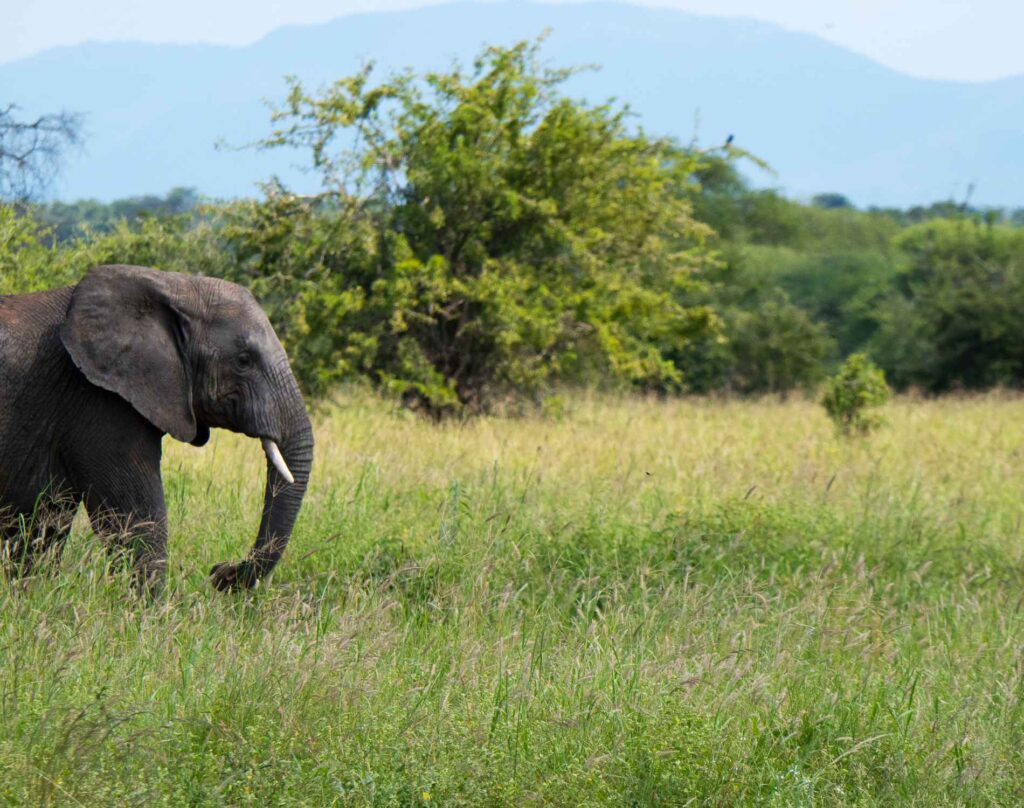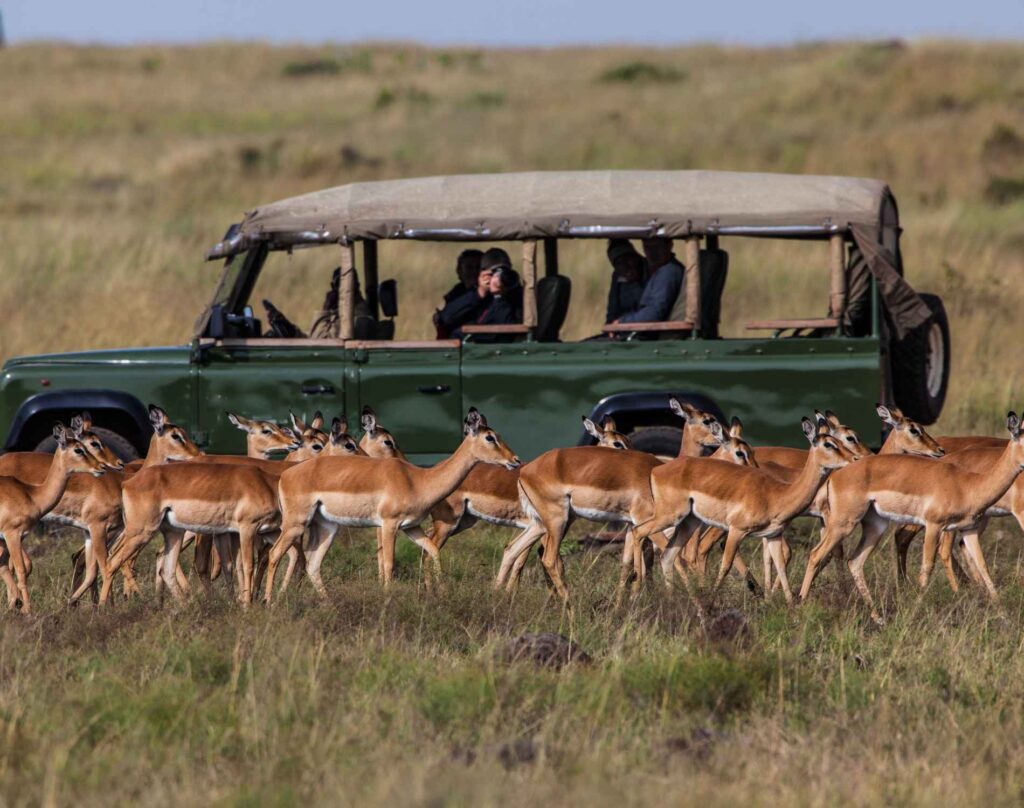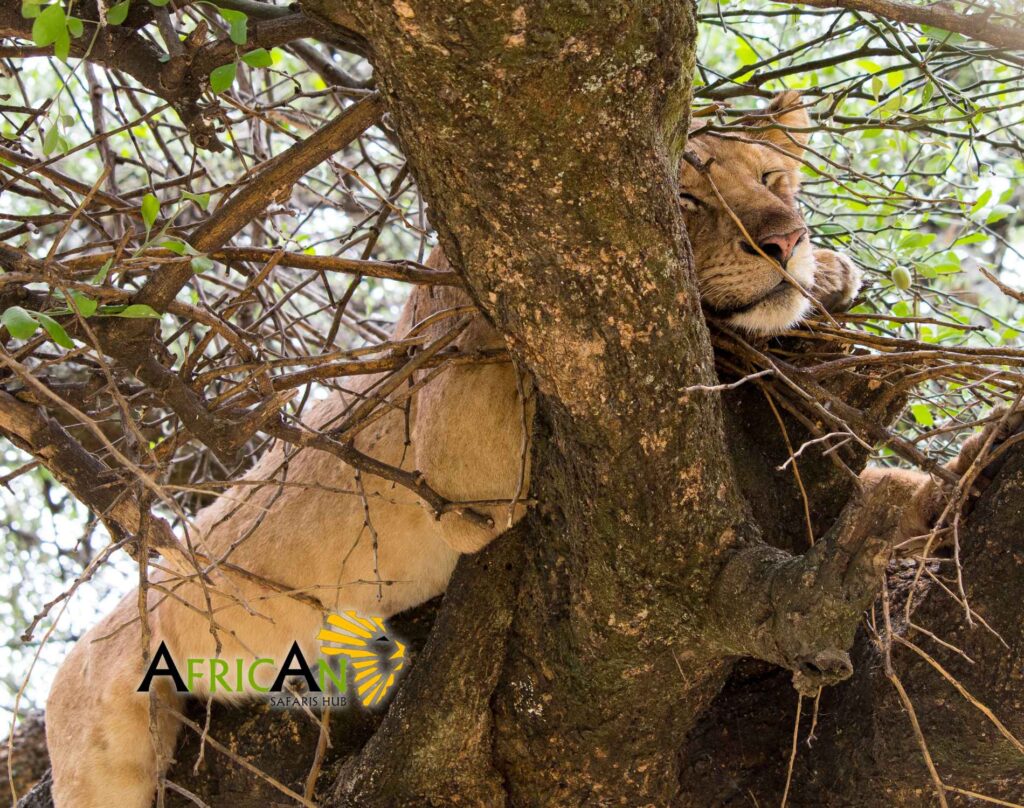The Best Time to Go on a Safari in Tanzania: A Seasonal Guide
Introduction to Safari in Tanzania

Tanzania, a vast and diverse nation in East Africa, is renowned for its breathtaking landscapes, rich cultural heritage, and unparalleled wildlife encounters. Embarking on a safari in this captivating country is an experience that should be on every adventurer’s bucket list. From the iconic Serengeti National Park to the majestic Ngorongoro Crater, Tanzania offers a plethora of destinations that promise unforgettable encounters with nature’s grandeur.
As you plan your Tanzania safari adventure, one of the most crucial considerations is determining the best time to visit. The country’s seasons play a significant role in shaping the wildlife viewing experiences, as well as the overall safari ambiance. In this comprehensive guide, we will delve into the different seasons, highlighting the pros and cons of each, to help you make an informed decision and maximize your Tanzania safari experience.
The different seasons in Tanzania

Tanzania experiences four distinct seasons throughout the year, each with its unique characteristics and offerings:
- Dry Season (June to October): This period is characterized by dry weather conditions, with minimal rainfall and cooler temperatures. The vegetation is sparse, making wildlife easier to spot as animals congregate around water sources.
- Short Rains (November to December): During this time, Tanzania experiences intermittent showers, which can lead to lush green landscapes and the arrival of migratory birds. However, some areas may experience heavy rainfall, making certain routes impassable.
- Long Rains (March to May): This is the wettest period in Tanzania, with frequent downpours and high humidity levels. While wildlife viewing can be challenging due to the dense vegetation, this season offers unique opportunities to witness the birthing of newborns and the arrival of migratory species.
The best time to go on a safari in Tanzania

While each season offers its own unique experiences, the dry seasons (June to October and January to February) are widely considered the best times for a Tanzania safari. During these periods, the weather is generally mild and dry, making it easier to spot wildlife as they congregate around water sources. Additionally, the lack of dense vegetation provides better visibility and accessibility to the parks and reserves.
However, it’s important to note that the peak season for safaris in Tanzania falls between July and September, coinciding with the annual wildebeest migration in the Serengeti. While this period offers the opportunity to witness one of nature’s most spectacular events, it also means that parks and lodges are at their busiest and most crowded.
If you’re seeking a quieter and more intimate safari experience, consider visiting during the green season (November, early December, and March to May). This period offers lower rates, fewer crowds, and the opportunity to witness unique wildlife behaviors, such as calving and the arrival of migratory birds.
Tanzania safari experiences during the dry season

The dry season in Tanzania, spanning from June to October, is often considered the prime time for safaris. Here are some highlights of what you can expect during this period:
- Excellent wildlife viewing: With minimal vegetation and animals congregating around water sources, the dry season offers unparalleled opportunities to spot a wide range of wildlife, including the Big Five (lions, elephants, buffalos, leopards, and rhinos).
- The Great Migration: Between July and September, you can witness the iconic wildebeest migration in the Serengeti, where millions of these majestic animals undertake an epic journey in search of greener pastures. During this period, the Mara River crossing in the Northern Serengeti is one of the most dramatic spectacles, as wildebeest risk their lives to cross the crocodile-infested waters into Kenya’s Maasai Mara. Additionally, the calving season in the Southern Serengeti is another key highlight, usually occurring between January and February, when hundreds of thousands of wildebeest give birth to their young, attracting predators and offering a stunning display of nature’s cycle.
- Comfortable temperatures: The dry season brings cooler temperatures, making it more comfortable for outdoor activities and game drives.
- Fewer mosquitoes: With less rainfall, there are fewer mosquitoes during the dry season, reducing the risk of malaria and other insect-borne illnesses.
Tanzania safari experiences during the wet season

While the wet season (November to May) may not be the most popular time for safaris, it offers unique experiences and opportunities for those willing to brave the occasional downpour:
- Lush landscapes: The rains transform the arid landscapes into lush, verdant oases, providing a stunning backdrop for your safari adventures.
- Calving season: Many species, including wildebeests and zebras, give birth during the wet season, allowing you to witness the adorable newborns taking their first steps.
- Migratory birds: The wet season marks the arrival of numerous migratory bird species, offering excellent opportunities for avid birdwatchers.
- Fewer crowds: With fewer visitors during the wet season, you can enjoy a more intimate and peaceful safari experience, away from the crowds.
- Discounted rates: Many lodges and tour operators offer discounted rates during the wet season, making it a more budget-friendly option for those seeking value.
Wildlife highlights during different seasons

Tanzania’s diverse ecosystems and varied seasons offer the opportunity to witness a wide range of wildlife throughout the year. Here are some of the highlights you can expect during different seasons:
Dry Season (June to October):
- Witness the iconic wildebeest migration in the Serengeti
- Spot lions, leopards, and cheetahs on the hunt
- Observe large herds of elephants and buffalos congregating around water sources
Short Rains (November to December):
- Watch newborn wildebeest calves taking their first steps
- Enjoy excellent birdwatching opportunities as migratory species arrive
- Encounter hippos and crocodiles in their natural habitats
Long Rains (March to May):
- Witness the birthing season for many species, including zebras and antelopes
- Spot migratory birds, including the stunning Carmine Bee-eaters
- Observe predators and their young as they take advantage of the abundance of prey
Dry Season (June to October):
- Experience the annual wildebeest migration as it reaches its peak
- Spot large concentrations of predators, including lions and cheetahs
- Enjoy excellent visibility and accessibility to the parks and reserves
Planning your Tanzania safari

When planning your Tanzania safari, it’s essential to consider various factors to ensure a seamless and unforgettable experience:
- Determine your travel dates: Based on your preferences and the wildlife experiences you wish to witness, decide on the best time to visit Tanzania. Consider factors such as the migration patterns, birthing seasons, and weather conditions.
- Choose your safari destinations: Tanzania boasts numerous national parks and reserves, each offering unique landscapes and wildlife encounters. Popular destinations include the Serengeti National Park, Ngorongoro Crater, Tarangire National Park, and Lake Manyara National Park.
- Consider your budget: Safari costs can vary significantly depending on the time of year, accommodation options, and the level of luxury you desire. Determine your budget and work with a reputable safari operator to find the best value for your money.
- Book in advance: Popular safari destinations and lodges can fill up quickly, especially during peak seasons. It’s recommended to book your safari well in advance to secure your preferred dates and accommodations.
- Obtain necessary travel documents: Ensure that you have a valid passport, visas (if required), and any necessary vaccinations or travel insurance for your Tanzania safari adventure.
Choosing the right safari operator

Selecting the right safari operator is crucial for a successful and memorable Tanzania safari experience. Here are some factors to consider when choosing a safari operator:
- Reputation and experience: Research the operator’s reputation, read reviews from previous clients, and ensure they have extensive experience in organizing safaris in Tanzania.
- Knowledgeable guides: Experienced and knowledgeable guides can greatly enhance your safari experience by providing insights into the local wildlife, culture, and environment.
- Sustainable practices: Consider operators that prioritize sustainable and eco-friendly practices, minimizing their impact on the environment and supporting local communities.
- Customization options: Look for operators that offer customizable itineraries, allowing you to tailor your safari experience to your specific interests and preferences.
- Safety and reliability: Ensure that the operator adheres to strict safety protocols and has a reliable track record of providing high-quality services.
Essential items to pack for your Tanzania safari

To ensure a comfortable and enjoyable safari experience, it’s essential to pack the right gear and essentials. Here’s a list of recommended items to bring on your Tanzania safari:
- Lightweight, breathable clothing in neutral colors (khaki, beige, olive green)
- Sturdy, comfortable walking shoes or hiking boots
- Sun protection (hat, sunglasses, sunscreen)
- Insect repellent
- Binoculars for wildlife viewing
- Camera and extra batteries/memory cards
- Flashlight or headlamp
- Lightweight rain jacket or poncho (for the wet season)
- Personal medications and first-aid kit
- Reusable water bottle
- Travel documents (passport, visas, travel insurance)
- Cash (US dollars) for tipping and additional expenses
- Credit/Debit Cards
Conclusion: Making the most of your Tanzania safari experience with African Safaris Hub

Embarking on a Tanzania safari is an adventure like no other, offering the opportunity to immerse yourself in the breathtaking landscapes, diverse wildlife, and rich cultural heritage of this captivating country. By carefully considering the best time to visit and planning your itinerary with a reputable safari operator, you can create unforgettable memories that will last a lifetime.
At African Safaris Hub, we understand the importance of crafting personalized safari experiences that cater to your unique interests and preferences. Our team of experienced safari experts will work closely with you to design a tailored itinerary, ensuring that you make the most of your time in Tanzania. From selecting the best destinations and accommodations to arranging knowledgeable guides and seamless logistics, we handle every detail with meticulous care. Contact us today to begin planning your dream Tanzania safari adventure and embark on an unforgettable journey through the heart of Africa.
